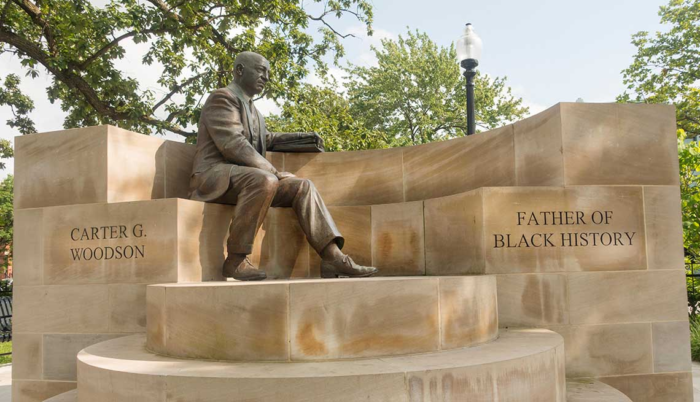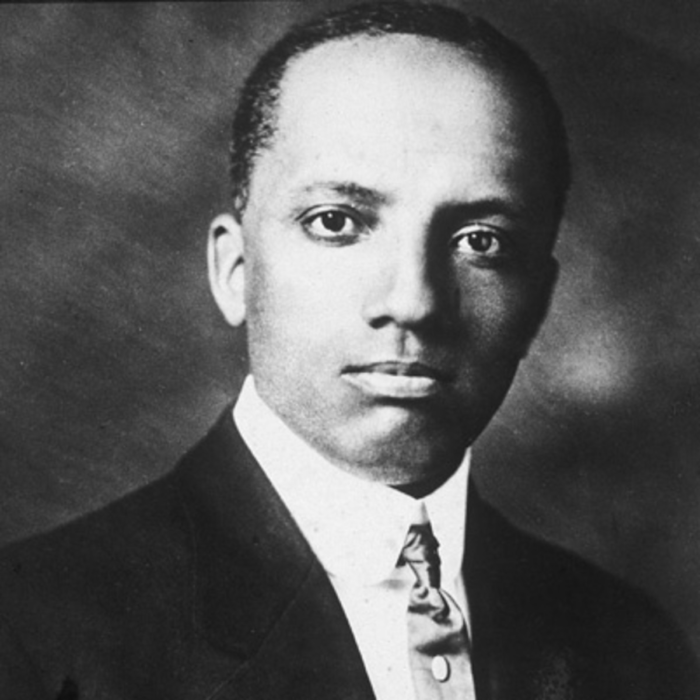By Kazi Islam
The month of February is known for being the month of African American pride, and is often celebrated among people of all colors throughout the nation. It is a time of year to commemorate and remember outspoken and exceptional African American figures who served as pioneering innovators in a wide range of fields, from science and sports to entertainment and politics. The cultural contributions of African Americans form an important part of American history.
Popular figures that are frequently associated with this month are Harriet Tubman, Dr. Martin Luther King Jr., Rosa Parks, etc. But the most commonly forgotten individual is the person most responsible for Black History Month: Carter G. Woodson.
Carter G. Woodson was an American historian, author, journalist, and the first person to formally establish public celebrations of Black History. As the son of former slaves, who were both illiterate, Carter G. Woodson was not able to regularly attend primary school as a child because his family needed him to help out on their farm. He dreamed of attending Douglass High School, which was a secondary school for blacks. However, he was compelled to further delay this dream because working as a coal miner prevented him from devoting most of his time to studying.
Woodson was finally able to fully dedicate himself to being a high school student at the age of twenty two. He earned his Bachelor of Literature degree from Berea College in Kentucky. He also became the second African American to earn a doctorate (after W. E. B. Du Bois), when he completed his PhD in history at Harvard University.
How He Came up With the Idea Promote Black History
Woodson believed that African Americans were mistreated and ignored. He collected thousands of publications and artifacts in an attempt to preserve black history. In his biography, he stated that African Americans were “suppressed by the writers of history textbooks and the teachers who use them,” and that racism against blacks is “merely the logical result of tradition, the inevitable outcome of thorough instruction to the effect that the Negro has never contributed anything to the progress of mankind.” He was the first person to create a “Negro History Week” in 1926 which was to be celebrated on the second week of February since it would include the birthdays of Abraham Lincoln and Frederick Douglass. In 1970, the Black United Students and Black Educators at Kent State University wanted to expand on Woodson’s idea and dedicate the entire month of February to black history.
Common Activities During Black History Month
According to the N.A.A.C.P., some common ways to celebrate Black History Month are: to donate to black organizations, support black businesses, visit a Black History or Civil Rights Museum, cook soul food, explore black history, read about influential black figures, and more.
Black History Month gives Americans a chance to appreciate black history and learn more about the history of our nation. However, many people have different views on the month seeing as we only have a month to celebrate something that played a big role in creating America and that it coincidently falls on the shortest month of the year.
This might give ignorant people the opportunity to ignore all of black history for the rest of the year, and show an insincere awareness to their African Americans compatriots when the month of February rolls around. Many people argue that there should not be only one month dedicated to a people who were so fundamental and central to the successful founding of this country, but that we should be remembering and respecting this aspect of our collective history every day.

